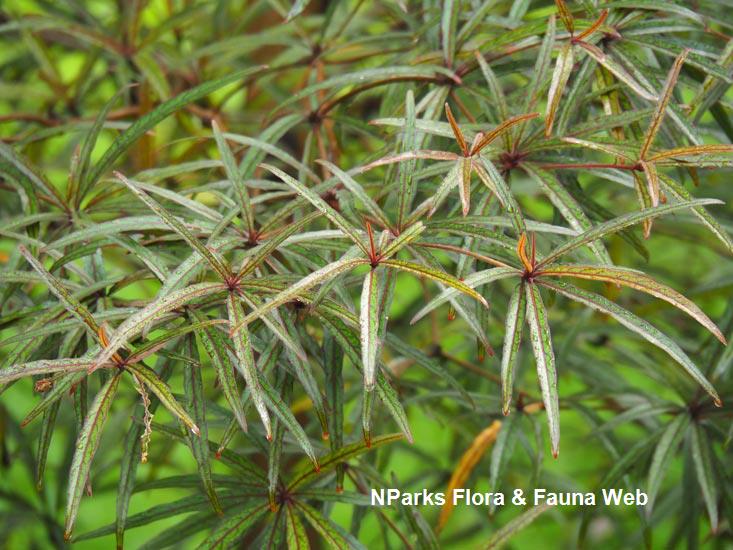
Back
Terminalia bentzoe (L.) L.f.
| Family Name: | Combretaceae |
| Common Name: | Benjoin |
Terminalia bentzoe is a tree endemic to Mauritius, Rodrigues and Réunion. It can reach up to 30 m tall and exhibits foliage dimorphism, where the appearance of young juvenile leaves differs from that of mature leaves. Its timber is valued for carpentry and quality joinery.
Name
Classifications and Characteristics
| Plant Division | Angiosperms (Flowering Seed Plants) |
|---|---|
| Plant Growth Form | Tree |
| Lifespan (in Singapore) | Perennial |
| Mode of Nutrition | Autotrophic |
| Plant Shape | Pyramidal |
| Maximum Height | 30 m |
Biogeography
| Native Distribution | Mauritius, Rodrigues and Réunion |
|---|---|
| Native Habitat | Terrestrial |
| Preferred Climate Zone | Tropical |
| Local Conservation Status | Non-native |
Description and Ethnobotany
| Growth Form | It is a tree, up to 30 m. The trunk exudes a thick resin with a scent reminiscent of Styrax species. |
|---|---|
| Foliage | The leaves are simple and cluster at the ends of branches. It exhibits foliage dimorphism, where the appearance of young juvenile leaves differs from that of mature leaves. Mature leaves are green and elliptic to obovate while juvenile leaves are narrowly elliptical and reddish tone with purple-red veins. |
| Flowers | The flowers occur in a branched cluster in the leaf axils. They are small and cream-white. |
| Fruit | The fruit is green, with two broad wings, and contains a single seed. |
| Habitat | It is found in forests at low altitude. |
| Associated Fauna | Flowers are likely pollinated by insects. It is also the host plant of the Reunion Island wood butterfly, Neptis dumetorum, a butterfly endemic to Reunion Island. |
| Etymology | The genus epithet terminus, in Latin, means end, referring to the leaves being borne at the ends of the twigs |
| Ethnobotanical Uses | Medicinal: Traditional Medicinal Uses In Mauritius, the bark is used in traditional medicine for both internal use, such as intestinal ailments, and external use, such as treating wounds, while the resin is applied to treat skin infections. It is important to note that some therapeutic effects from traditional medicinal uses of plants are not currently supported or verified by scientific research.Timber & Products: The timber is valued for carpentry and quality joinery. The trunk exudes a thick resin with a scent reminiscent of Styrax species |
Landscaping Features
| Desirable Plant Features | Ornamental Foliage |
|---|---|
| Landscape Uses | Parks & Gardens |
Fauna, Pollination and Dispersal
| Pollination Method(s) | Biotic (Fauna) |
|---|
Plant Care and Propagation
| Light Preference | Full Sun |
|---|---|
| Water Preference | Moderate Water |
| Plant Growth Rate | Moderate |
| Propagation Method | Seed |
Foliar
| Mature Foliage Colour(s) | Green |
|---|---|
| Prominent Young Flush Colour(s) | Red, Purple |
| Foliar Type | Simple / Unifoliate |
Non - Foliar and Storage
| Trunk Type (Non Palm) | Woody |
|---|---|
| Root Type | Underground |
Floral (Angiosperm)
| Flower Colour(s) | Cream / Off-White |
|---|---|
| Flower Grouping | Cluster / Inflorescence |
| Flower Location | Axillary |
Fruit, Seed and Spore
| Fruit Classification | Simple Fruit |
|---|---|
| Fruit Type | Indehiscent Dry Fruit , Samara |
| Seed Quantity Per Fruit | Few (1-5) |
Image Repository
Others
| Master ID | 33840 |
|---|---|
| Species ID | 8256 |
| Flora Disclaimer | The information in this website has been compiled from reliable sources, such as reference works on medicinal plants. It is not a substitute for medical advice or treatment and NParks does not purport to provide any medical advice. Readers should always consult his/her physician before using or consuming a plant for medicinal purposes. |

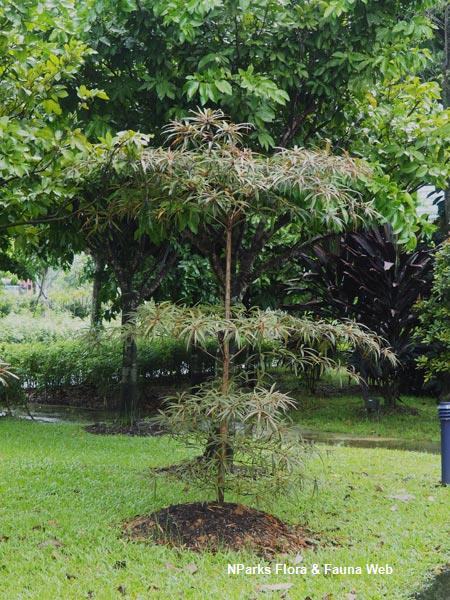
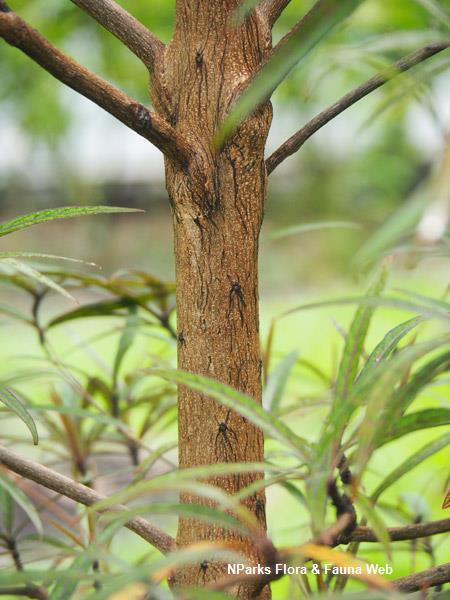
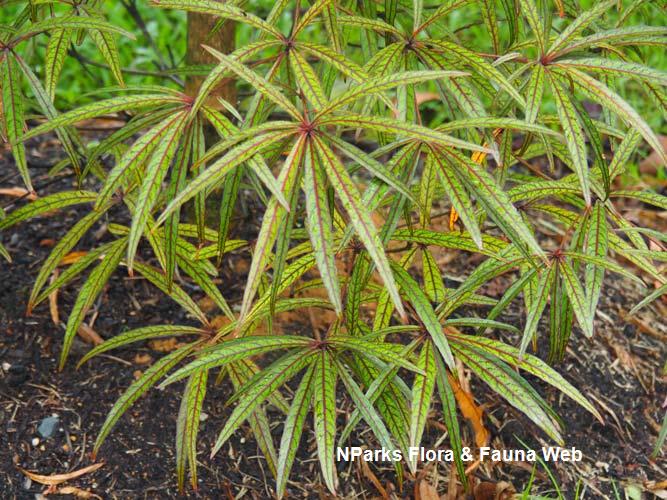
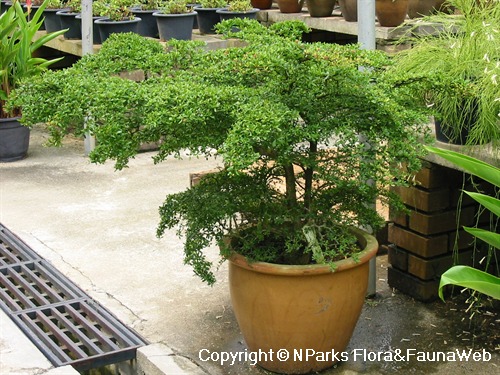
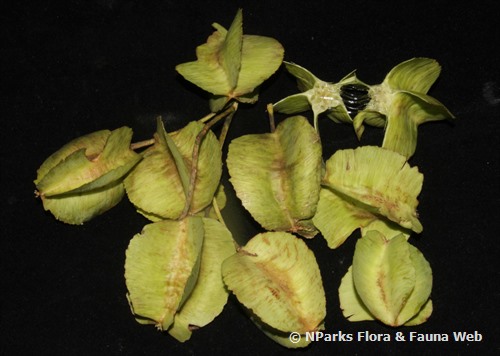
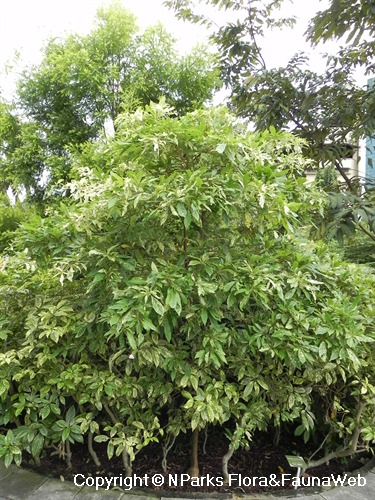
.jpg)